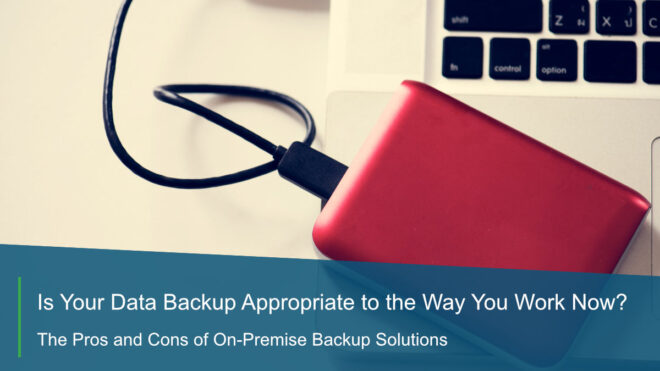The last few years have seen businesses grapple with the worst health crisis in a century, a global pandemic that has left an indelible mark on the way we both live and work.
While the crisis itself is something we’d all rather put behind us, it forced many businesses to explore new and innovative technologies, necessitated by the need to remain operational despite the challenges posed by lockdowns. While Cloud Computing is nothing new, the last few years saw businesses explore cloud-hosted platforms and infrastructure in order to achieve enterprise mobility, on a scale never seen before.
What is Cloud Computing?
The simplest definition of cloud computing, is the hosting of software, platforms and computing resources in offsite data centers that are accessible via the internet. A key feature of cloud computing is ‘enterprise mobility:’ the ability to enable remote access to workplace resources thus enabling employees to work from home. From pre-packaged workplace productivity platforms like Microsoft 365 to the ability to provision resources for the construction of anything from SQL databases to custom web applications, the Cloud offers resources and services as varied as the organisations who use it.
Among the numerous cloud services on offer are remote backup services. Also referred to as “cloud backups” or “managed backup services,” these services create copies of data for recovery purposes, and store these copies either in the backup service provider’s servers and/or another cloud-connected storage location. While cloud backups are growing in popularity, traditional on-premise backups remain the favored option for the majority of organisations – at least for now!
So what’s the difference, and how do Cloud backup’s compared to their on premise counterparts? Let’s compare the pros and cons of each, starting with the solution you may be more familiar with: the on-premise backup.
On-Premise backup solutions
Despite the widespread proliferation of cloud services in recent years, on-premise backups remain the data recoverability solution of choice for most businesses…but why?
- Compliance reasons. Some of the most regulated industries, including healthcare and finance, require on-premise backups – or hybrid arrangements – for compliance reasons.
- Tradition. Many organisations, especially those still reliant on legacy software programs, continue the use of on-premise backups simply out of habit. Having invested in the system, they’re keen to use it to get value-for-money.
- Perceived security. Copying data to another on-site location gives peace of mind to some companies, and with the storage location being within the LAN (local area network) backup and data restoration activities can be performed without an internet connection.
On-premise backup solutions can use a variety of storage media, including network attached storage, servers, hard drives, disks or tape drives.
Pros of On-Premise Backups
Offline Availability
The most glaring benefit of on-premise backups are there ability to operate without an internet connection. While the majority of businesses require an internet connection to function, it’s reassuring to know that in the event of a broadband outage you’ll be able to recover the data you need without difficulty. Plus, when supported by robust network infrastructure, on-premise backups can be faster and offer lower latency than cloud alternatives.
More secure (in some ways)
Although typically offering end-to-end encryption to protect transiting data, cloud backups still involve transporting your data across the internet, exposing it to the possibility (albeit remote) that a malicious actor might intercept and exploit it.
On-premise backups on the other hand are more secure in this limited sense, as your data won’t leave the confines of your trusted network, and remains under the protection of network security tools (like firewalls) at all times.
Configurability
On-premise backups often allow for greater configurability than their cloud-hosted peers. You or your tech team can provision as much storage as you need and perform backups as frequently as required. Usage restrictions don’t exist when you own and run your backup infrastructure.
No monthly fees
While on-premise backups present costs in different ways, they don’t burden you with monthly fees like cloud-hosted services typically do. While the costs involved in running and maintaining an on-premise backup can mount up over time, they can prove an attractive option for businesses seeking to keep fixed monthly expenditure low.
Cons of on-premise backups
Your business will assume greater responsibility
With great control comes great responsibility – at least when it comes to data backups. An on-premise backup requires you to employ-in or contract-out the skills and expertise required to run your backup infrastructure. You or your tech partner will have to ensure your backup infrastructure is properly maintained and operating in accordance with you regulatory obligations.
Greater Physical Security risks
Vast quantities of sensitive data stored on-premise could constitute an appealing target for thieves, necessitating an advanced and costly range of physical security measures. Depending on the sensitivity of the data in your system you may (if you haven’t already) be forced to install CCTV, alarms systems and controlled entry to deter would-be thieves.
The data centers used to house cloud-hosted backup solutions deploy such security measures by default and often also feature 24/7 security personnel for added protection.
Disaster Vulnerability
Using an on-premise backup solution in isolation is never wise from a disaster recovery point of view. Storing all backup data in your office environment might leave it irretrievable in the event of a fire, flood and any other scenario involving hardware destruction.
Such risks can be mitigated by operating an off-site backup in parallel to your on-premise system.
Scale-up costs
Increasing the computing power to run your backup or scaling up your data storage means acquiring and installing expensive hardware. It’s also important to factor in the cost of replacing such hardware when it reaches the end of its useful life. While on-premise backups don’t carry monthly subscription charges, the set-up and expansion costs can be truly eye-watering, particularly for smaller businesses.
Conclusion
If you’re currently using an on-premise backup solution it may be worth considering its limitations. While such systems have their advantages, operating your on-premise solution alongside an alternative that backs up data to an off-site location may benefit your data security objectives. Stay tuned for our next article, where we’ll explore the benefits and drawbacks of cloud-hosted backup solutions.



